Treasury Tax Powers Seen Limiting Corporate Inversion Deals
This article by Richard Rubin for Bloomberg may be of interest to subscribers. Here is a section:
In its statement this week, the department said it was looking at a “broad range of authorities” that would limit inversions or “meaningfully reduce the tax benefits after inversions take place.”
Henrietta Treyz, an analyst at Height Securities LLC, wrote in a note to clients yesterday, “This is a sharp change in tone from the Treasury, which has to date been quite clear that it believed the power of its agency as well as the IRS to stem inversions has been exhausted.”
The latter portion of the Treasury statement may refer to a practice known as earnings stripping, in which companies with legal addresses outside the U.S. load up their U.S. subsidiaries with debt and other deductions. Although they are still subject to U.S. income taxes on their domestic profits, the companies are able to push those profits outside the U.S.
2007 Treasury Department study found evidence that inverted companies engage in earnings stripping.
Two Possibilities
Stephen Shay, the former top international tax lawyer at Treasury, suggested two possibilities for addressing inversions, both of which he said could be accomplished by regulation.One would characterize some debt of inverted companies as equity. That would prevent companies from engaging in earnings stripping because they wouldn’t be able to get the same deductions for interest expenses in the U.S.
The other approach Shay recommended in a Tax Notes article last month would stop companies from financing inversions with offshore earnings that haven’t been taxed by the U.S. Currently, Treasury allows companies to lend their offshore stockpiles to their new foreign parents.
The Organization for International Investment, which represents companies based overseas with U.S. operations, said some ideas under discussion could affect more than just inverted companies.
With some of the highest corporate tax rates in the world, US companies have an incentive to pursue tax optimisation strategies to limit their exposure. The surge in MLP listings for domestically oriented companies and reliable cash flows has been one solution. For companies with substantial portions of their earnings overseas, many of whom are Autonomies, the allure of decamping to a more tax friendly jurisdiction is compelling. Considering the fact that rising expenditures on government programs need to be paid for, the US government has an incentive to make sure that doesn’t happen.
It seems unlikely, at least at this time, that comprehensive tax reform, where government finances can be protected, the code simplified and corporations encouraged to invest their profits in the USA, can be achieved. It suggests that the antagonistic atmosphere between the administration and the corporate sector is likely to persist.
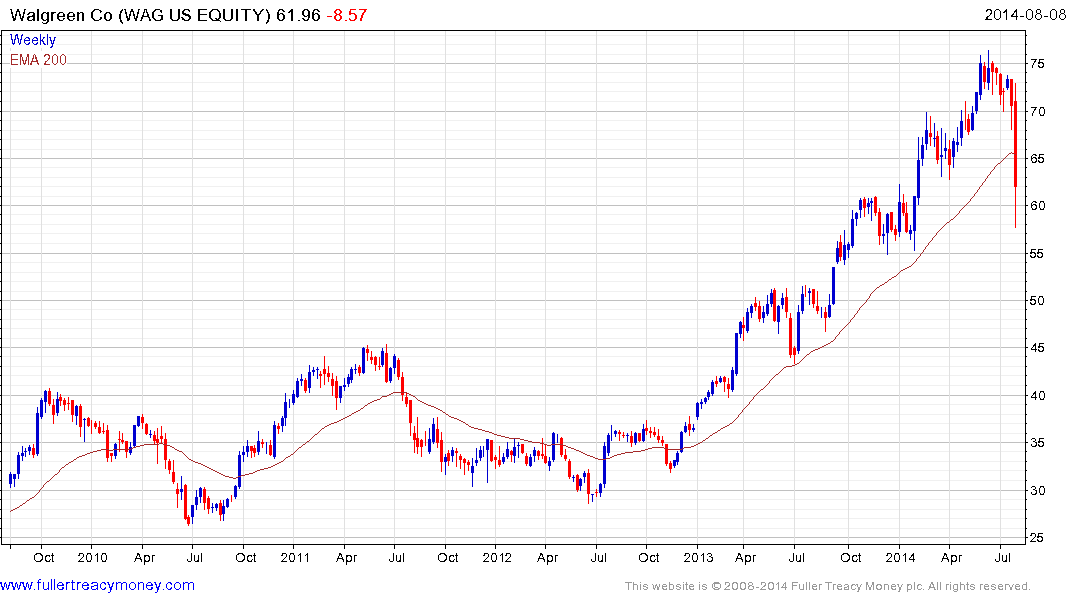
Walgreens pulled back sharply yesterday to break the medium-term progression of higher reaction lows. While there is scope for some additional steadying following today’s rally, a sustained move above the 200-day MA, currently near $65.50, would be required to question type-2 top formation characteristics.
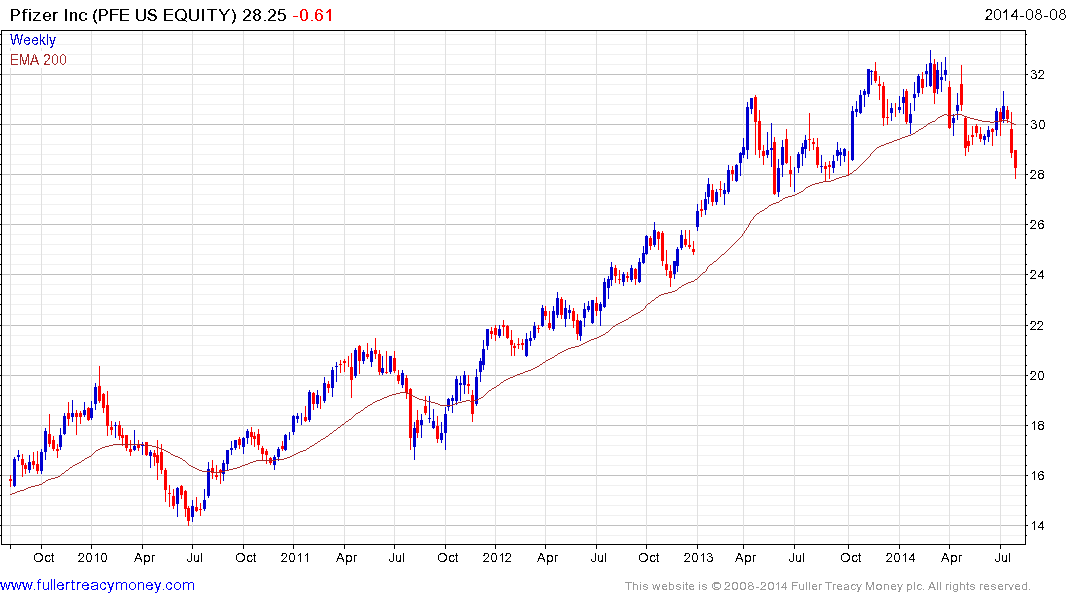
Pfizer has also lost uptrend consistency since failing in its attempt to acquire Astra Zeneca. The share encountered resistance in the region of the 200-day MA last month and dropped to extend the decline this week. A sustained move above the July peak near $30 is the minimum required to suggest a return to medium-term demand dominance.
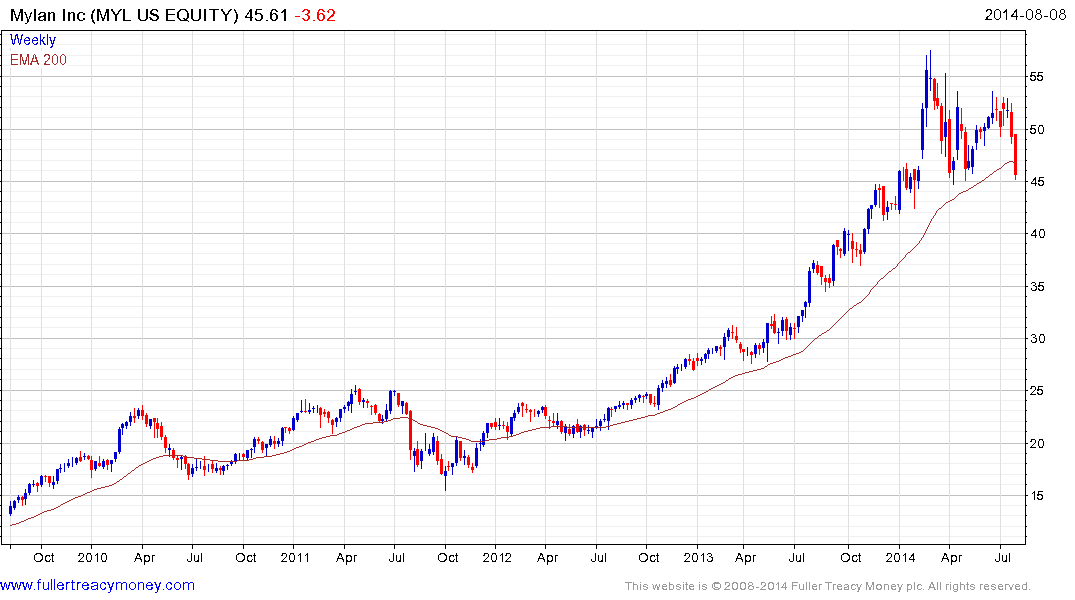
Among pending inversions both Medtronic and AbbVie have pulled back to test their respective 200-day MAs.

Following an accelerated advance Mylan has lost momentum and dropped today to challenge the lower side of the developing range.
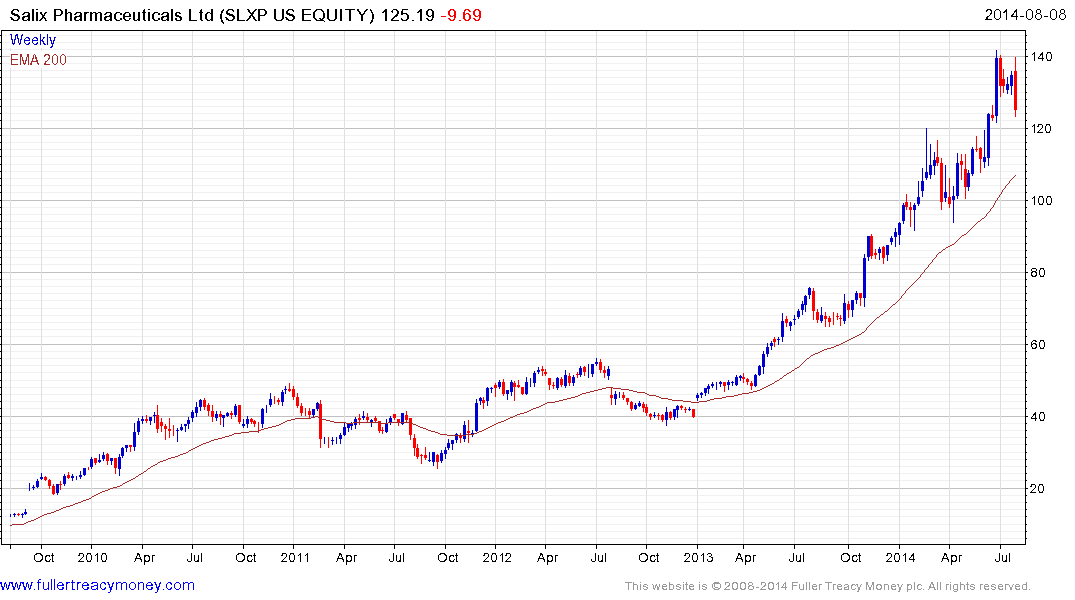
Salix Pharmaceuticals posted a large outside week following an impressive acceleration to suggest at least a near-term peak has been reached.
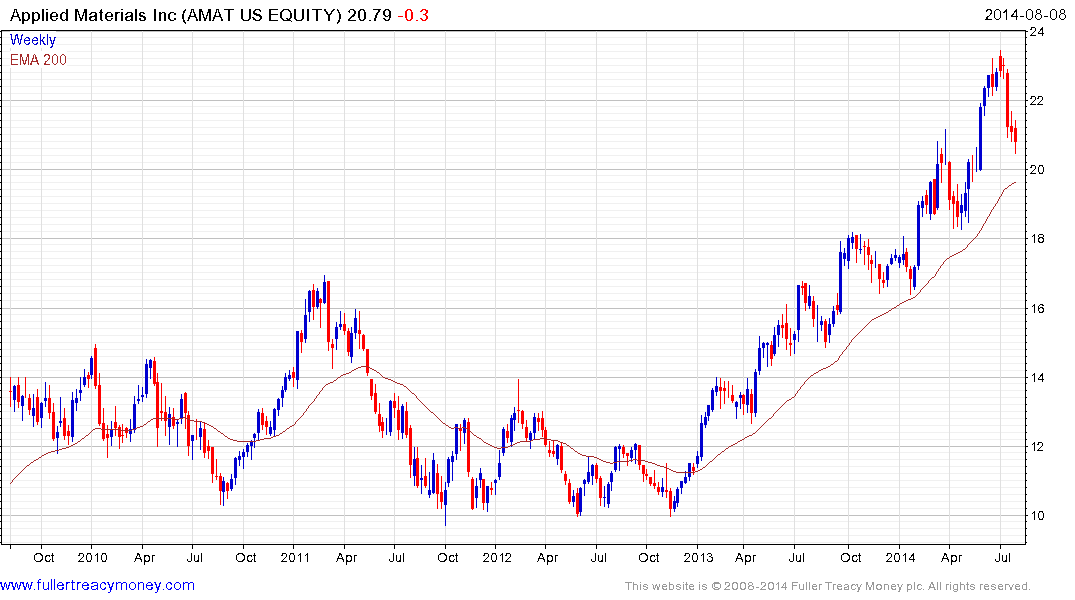
Applied Materials is also unwinding an accelerated advance as it pulls back to test the region of the 200-day MA.


